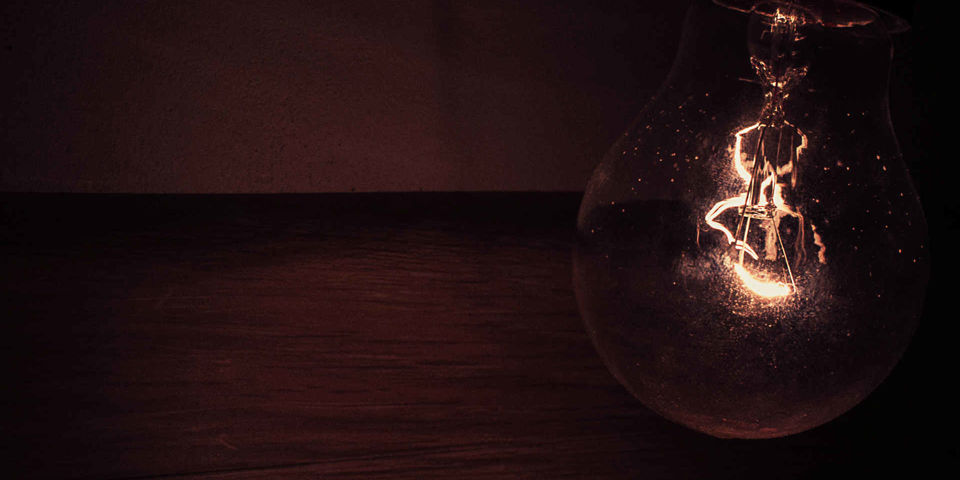There’s no denying that times are tough. Every trip to the grocery store is accompanied by cries of “How could these five things cost that much?” I was used to R250 getting the needle on my petrol gauge to halfway, but now it’s back up to R300. And my monthly electricity bill – which is already outrageous – will increase by a further 14.25% from 1 July.
There’s little I can do about the fuel increase, and I’m already doing what I can to cut the costs of my family’s grocery bill, so this winter it’s going to have to be the electricity bill that gets the squeeze.

Looking for a life quote?
We'll call you!
City Power has announced that in Johannesburg (where I live) they have approval to implement “time of use” tariff for smart meter users (which I am). What this means is that from 1 July, electricity will be priced differently at different times during the day. The highest cost time will be the “peak” periods between 07:00 and 10:00 and 17:00 and 21:00 on weekdays, when the rate will be two and a half times higher than the standard rate.
On the upside, power usage outside these times will be costed at lower than the current rates. The point is not for Eskom to make more money out of us (although they’d like that too), the point is to strenuously discourage us from using electricity during peak times.
Making it work for me
For some time, I’ve been doing what I can to reduce my energy consumption. My husband and I have already done all the good things like installing geyser timers and energy-efficient light bulbs. We only run the pool pump every second day for four hours and we cook on gas.
But this latest shift in power dynamics means that we don’t have to think only about reducing our overall electricity consumption; it means we have to think about when we use power as well. And the good thing is that we’ll actually be rewarded for doing so. “We could even end up saving money!” my husband said.
So here, at the urging of our government and our power provider, is my seven-point plan for reducing electricity usage during peak times (and saving ourselves a bit of money, with any luck):
1. Adjust the geyser timers
We’ve already installed geyser times, so we’ll just make sure that things heat up outside of the peak usage periods. Geyser timers are cheap to buy and easy to install – and since your geyser guzzles the majority of your household power, it’s a good place to start. Or you could always go solar.
2. Make sure we cook only on gas
We are fortunate enough to have gas hotplates. If you don’t have a gas hob, you can buy gas hotplates that run on bottled gas or use a Cadac. And the Wonderbag provides a fantastic electricity-less slow-cooking alternative for making stews and soups all day while you’re at work. If you’re stuck with an electric hob, use these tips from Eskom to make your cooking more energy efficient.
3. Off-peak charging
Make sure that all your chargeables, including your laptop, are charged before 7am and 6pm, and then unplug everything as the clock ticks over.
4. Ban the evening television
Well, kids, good news, your winter TV time has officially been moved to the afternoon after school and in the evening, we’ll now be playing board games. (I’ll let you know how successful this point is.) If the TV is a non-negotiable part of your life, plan around the shows you really want to watch and don’t just leave it on for background noise.
5. Schedule all electricity-use activities outside of peak times
Running the dishwasher? After 9pm. Running the washing machine? After 10am. Mowing the lawn? After 10am. Running the pool pump? Ditto. It isn’t always convenient, but it’s doable to adjust the schedule of household chores to fly under the peak costs radar.
6. Use gas for heating
The always-on panel heaters are getting retired, and we’re going back to the old routine of huddling around a gas heater in the only warm room in the house at night. Buy a gas heater before the winter rush and stock up on 9-litre canisters. Chuck out your electric heaters.
7. Keep doing all that other stuff, just do it more
We were already trying to remember to switch off unused lights, to unplug chargers when not in use and to make sure that no electronic devices are in standby mode. Now we’re just upping our game.
It can be done
With food, fuel, clothes, education and entertainment costing a little (or a lot) more every year that goes by, it’s encouraging to be able to have one area in which it’s possible to make real savings. Although that saving potential comes from an unexpected source – electricity, go figure – it’s there for us to use, and with some small lifestyle changes, we can make a big difference to our budgets.
By the way, the City of Joburg has said that it will need to get smart meters installed around Johannesburg so that this “time of use” billing can apply to everyone. It remains to be seen whether or not they will achieve this. However, it will be worth it to stick to these strategies anyway to lower our heating and cooking bills and to do our bit to reduce the ever-present risk of load shedding.
About Georgina
Georgina Guedes is a writer, editor and content producer with a passion for reading, eating and travel. She has learnt a lot in her journey as a personal finance writer, and even manages to put some of it into practice! She lives in Johannesburg with her husband, two children, two dogs a cat and a white picket fence. You can follow @georginaguedes on Twitter.
The views and opinions expressed in this article are those of the authors and do not necessarily represent or reflect the views of 1Life or its employees.
